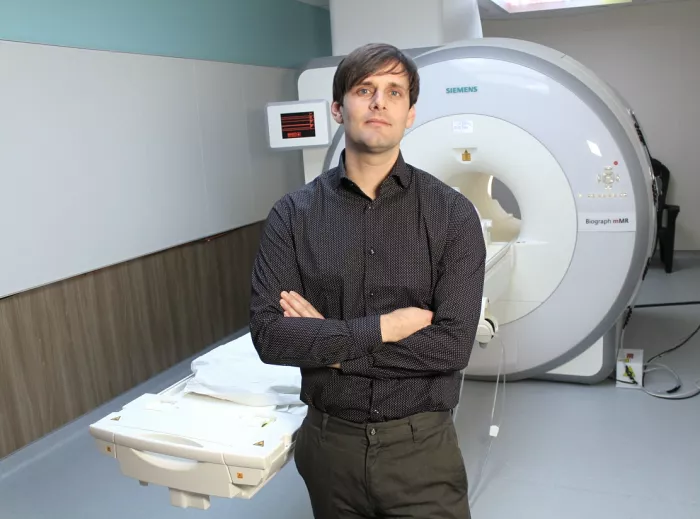Alzheimer's disease is a degenerative nervous system disease, which can lead to brain cell death and brain atrophy. Alzheimer's disease is the most common form of dementia. It is defined as the gradual deterioration of cognitive, behavioral and social abilities, which limits a person's ability to operate independently.
Alzheimer's disease affects about 5.8 million people aged 65 and over in the United States. 80% of them are 75 years old or older. Alzheimer's disease is believed to affect 60% to 70% of the 50million dementia patients worldwide. This makes Alzheimer's disease one of the main causes of dependency and disability in the elderly. Although progress has been made in understanding this terrible brain disease, diagnostic tests are limited and there is currently no treatment.
Now, a new study by an assistant professor at the University of Ottawa School of medicine and a group of colleagues shows that a revolutionary neuroimaging technology can be used for large-scale Alzheimer's disease screening. In addition, it may provide insight into the early stages of the disease before symptoms appear.
These findings may help guide the development of targeted drugs in the future and pave the way for a practical, low-invasive method for screening Alzheimer's disease. Alzheimer's disease may lead to a serious decline in cognitive ability, so that patients lose the ability to identify relatives, or even lose the basic ability to talk.
The research of scientists recently published in the peer-reviewed journal neuropsychopharmacology in February shows that the use of a high-resolution imaging method called "neuromelanin sensitive MRI" may be expected to predict the risk of symptoms or guide future treatment.

Faculty's Department of Cellular & Dr. Clifford Cassidy, assistant professor of molecular medicine (CMM) and scientist of the Royal Institute of mental health (IMHR), is the first author of this paper. The study was carried out in collaboration with McGill Center for aging research. It is part of a large-scale study involving healthy elderly, high-risk groups and patients with dementia.
Their findings confirm previous data that the brain's norepinephrine system is gradually degenerating with the onset of Alzheimer's disease. This brain system is very important because it may be the first area affected by Alzheimer's disease, and its pathology is related to the symptoms of the disease.
For example, researchers have found strong evidence that the integrity of the norepinephrine system is related to the behavioral symptoms of one of the most onerous aspects of Alzheimer's disease: aggressive and impulsive behavior.
"These behaviors are often the reason why people enter the family and can no longer live independently," Dr. Cassidy said.
He pointed out that the study showed a practical way to track the pathophysiology of Alzheimer's disease patients or people at risk. Prior to this, it was only possible to use methods that could only be used on a small scale or in postmortem studies.
Cassidy said: "we still don't understand why some people have Alzheimer's disease and some don't. We don't know why some people are protected and some people are vulnerable. So the question is: what makes you vulnerable?"
It is estimated that tens of millions of people worldwide suffer from Alzheimer's disease, and with the aging of the global population, the incidence rate of this brain disease is also accelerating. A key marker of the disease is a protein called tau, which forms tangles in neurons of Alzheimer's patients.
This specialized MRI technique allows you to see neuromelanin in the norepinephrine neuron control center, a dark pigment associated with melanin that colors the skin. This is important because "there is evidence that the norepinephrine region of the brain is actually the first part to start accumulating tau, which is earlier than any symptoms," Dr. Cassidy pointed out.
In his research, Dr. Cassidy is exploring the application of this imaging method in different contexts and exploring how it can answer different questions of a wide range of mental diseases. He pointed out that there are a lot of possibilities.
Nuclear magnetic resonance imaging sensitive to neuromelanin has been used to observe neuronal degeneration in Parkinson's disease and healthy aging. Schizophrenia and addiction have also been studied. Cassidy and colleagues are now exploring its association with attention deficit hyperactivity disorder (ADHD).
It is reported that Dr. Cassidy has been working with these colleagues at McGill University since 2018 and persuaded them to add neuroimaging technology to complement many other available measures. This is the first paper of this cooperation, but their work is still in progress. Future papers will observe data in different ways and better incorporate them into longitudinal data sets to observe changes over time.
Dr Cassidy has developed a fully automated method for viewing neuromelanin sensitive MRI images. Previously, this work required manual tracking, which made it very labor-intensive and subjective. Now, a computer system processes the original image.
In addition, the technology is expected to be commercialized. Dr. Cassidy and his colleagues are already working with a biotechnology company and a software company to develop their tools into a software package. At present, it is awaiting FDA approval.